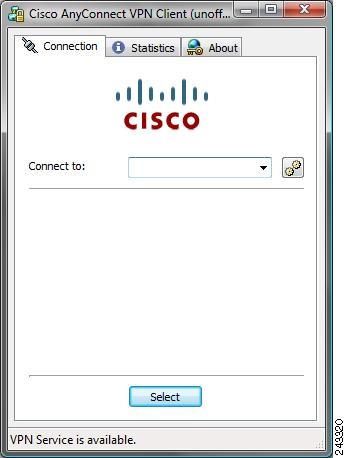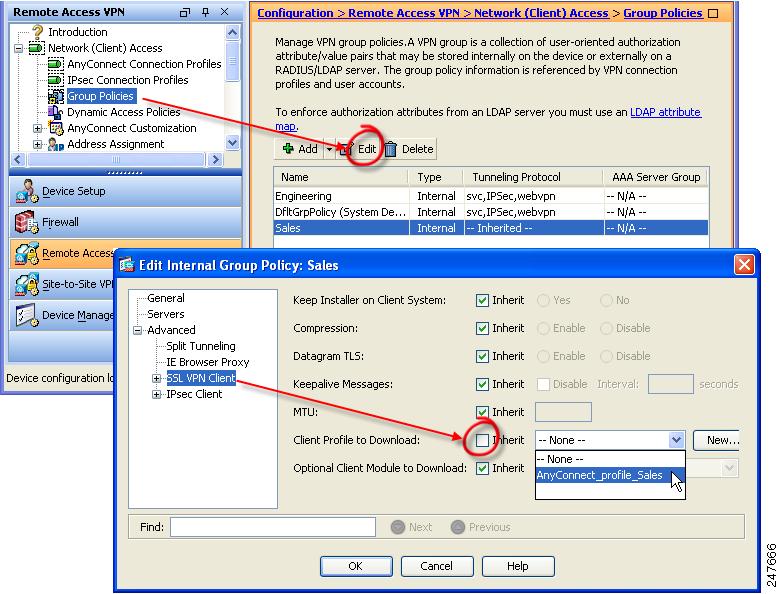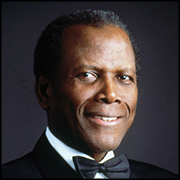|
madsushi posted:Extreme Networks gear is the perfect stuff for people just learning about networking. The way they handle VLANs and tagging is really simple, which of course doesn't scale well, but it's much easier to teach a newbie on Extreme than on Cisco. Once they understand the fundamentals, you can move onto the more substantial gear, but I have never worked on a switch as easy and as pleasant to configure as an Extreme. Can you give an example? When I was learning VLANs I had no problem understanding tagged/untagged/native vlans, though it did take me a little while to remember which was which.
|
|
|
|

|
| # ? May 13, 2024 23:11 |
|
madsushi posted:Extreme Networks gear is the perfect stuff for people just learning about networking. The way they handle VLANs and tagging is really simple, which of course doesn't scale well, but it's much easier to teach a newbie on Extreme than on Cisco. Once they understand the fundamentals, you can move onto the more substantial gear, but I have never worked on a switch as easy and as pleasant to configure as an Extreme. You also get to learn a lot about redundancy and dealing with support.
|
|
|
|
Powercrazy posted:Can you give an example? When I was learning VLANs I had no problem understanding tagged/untagged/native vlans, though it did take me a little while to remember which was which. On an Extreme, VLANs are actually objects, sort of like virtual switches. You add ports to VLANs, rather than the other way around. In Cisco, you would take an interface and say "switchport access vlan 200". That's an interface-centric view. In Extreme, you would say "vlan 200 add port 20". That's a VLAN-centric view. The idea is that you tell someone a VLAN is a "virtual switch" used to segment a physical switch. You create your "virtual switch" and then add ports to it. It's VERY easy to say "show vlan" and see the ports that are in there. On a Cisco, it's more complex process. The other difference, obviously, is trunking. In Cisco, when you make a trunk, you're adding ALL of the VLANs to that trunk. In Extreme, you have to go to each individual VLAN and you have to add the port to each. This is a huge pain. If you had 100 VLANs, you would have to issue 100 commands to add one port to each VLAN. The key is that the "virtual switch" mental model and the idea of VLANs as objects is very simple to grasp. There's no native/access/modes. A port can be in a VLAN as "untagged" or "tagged", and that's it. The syntax is simple and forgiving (there's no config depth, like on a Cisco). You deal almost entirely with the VLAN objects and rarely have to change anything on the port config themselves. e: One last thing, Extreme allows you to name VLANs. So you can name your VLAN "storage" and refer to it as "storage" in all future commands. Makes it easy for new guys to type "vlan storage add port 10" and never have to remember tags. madsushi fucked around with this message at 00:17 on Oct 13, 2012 |
|
|
|
I've always been a little surprised that there's no VLAN-centric mode on IOS. Seems like that would have been a cool thing for vlan database to have, but we moved away from that.
|
|
|
|
Powercrazy posted:Can you give an example? When I was learning VLANs I had no problem understanding tagged/untagged/native vlans, though it did take me a little while to remember which was which. Force10 has a nice VLAN setup. They're an interface configuration without any flat layer 2 configuration. You add physical interfaces/channels to it, tagged or untagged. You can set portmode hybrid on a interface/channel to get it to pass untagged/tagged like a Cisco trunk does. The real e: I really like the idea of named VLANs. bort fucked around with this message at 00:48 on Oct 13, 2012 |
|
|
|
bort posted:Exacerbated by Cisco not using "tagged" or "untagged" for some reason. When I first got some Force10 switches I was so confused as to how to configure a port channel and LACP. It's cisco-like but they do things differently enough for it to be pretty confusing. Also one thing I ran into with the S50Ns, all the ports share the same mac address, so if you're using load balancers or any other device that uses mac based forwarding it can get weird and annoying if you have multiple networks connected from the same switch. As for VLAN configuration, if you're used to the cisco way it's always a bit confusing trying to do it with other manufacturers (force10, HP, etc.) since they assign the vlans on the vlan interface as opposed to the port.
|
|
|
|
I don't find it confusing at all on Force 10 (maybe because I do it almost every day):code:quote:The other difference, obviously, is trunking. In Cisco, when you make a trunk, you're adding ALL of the VLANs to that trunk. In Extreme, you have to go to each individual VLAN and you have to add the port to each. This is a huge pain. If you had 100 VLANs, you would have to issue 100 commands to add one port to each VLAN. Bluecobra fucked around with this message at 15:15 on Oct 13, 2012 |
|
|
|
madsushi posted:e: One last thing, Extreme allows you to name VLANs. So you can name your VLAN "storage" and refer to it as "storage" in all future commands. Makes it easy for new guys to type "vlan storage add port 10" and never have to remember tags. Thanks for the info, I believe Brocade does it similarly to that as well. But here is a question: If my Storage vlan is vlan 100, but I name it "storage" can I only refer to it by name, or can I still call it vlan 100. Also am I the only person that names vlan by their network info? i.e. 10.20.30.0/25 and another vlan would be 10.20.30.128/25
|
|
|
|
I tend to prefer names based on use, but any naming convention that provides usable significance is a good one, I would say. It's certainly better than VLAN100. Like, that would be a terrible convention if you were to deal at all with separated overlapping networks. It might even be a bad idea in terms of scaling and avoiding redesign if that were a future possibility.
|
|
|
|
While I use cisco more than anything else, I do use procurve often and I prefer it's vlan xxx tagged [interface] syntax much more than I like cisco's interface centric viewpoint.
|
|
|
|
Oddly enough, I prefer the Cisco interface centric view. When I am troubleshooting something, I want to know everything about that interface when I view that specific code section. In Juniper, it is nice because you can add a port to a vlan based on named vlan or vlan-id.
|
|
|
|
Does juniper have a range command yet?
|
|
|
|
Powercrazy posted:Thanks for the info, I believe Brocade does it similarly to that as well. But here is a question: Yep, you can refer to it by tag or by name. You can't name a VLAN a number, but the name can contain numbers (e.g. "storage2").
|
|
|
|
routenull0 posted:Oddly enough, I prefer the Cisco interface centric view. When I am troubleshooting something, I want to know everything about that interface when I view that specific code section. This is exactly my feeling, and for the same reason. For me it's a pain in the arse to have to dig through the various VLAN commands to show what VLANs an interface is a member of.
|
|
|
|
Powercrazy posted:Does juniper have a range command yet? Not like Cisco, in JunOS you build a "profile" per se and set all the interface settings on it, then put the ports into the profile.
|
|
|
|
Anjow posted:This is exactly my feeling, and for the same reason. For me it's a pain in the arse to have to dig through the various VLAN commands to show what VLANs an interface is a member of. In pro curve its sh vlan port [xxx] or sh vlan [Id]. Its nice to be able to do it either way.
|
|
|
|
I've got a 7604 with an RSP720-3CXL that we just got back from being repaired. It appears that it may have been left with some flag set so that it is very verbose during its boot procedure. Does anyone know how I might reset it to normal boot messages?
|
|
|
|
Anjow posted:I've got a 7604 with an RSP720-3CXL that we just got back from being repaired. It appears that it may have been left with some flag set so that it is very verbose during its boot procedure. Does anyone know how I might reset it to normal boot messages?
|
|
|
|
Is there some key somewhere that actually explains what the letters in Cisco switch model names mean? Trying to figure out the difference between a WS-C2960S-48FPD-L and a WS-C2960S-48LPD-L, for example.
|
|
|
|
Mierdaan posted:Is there some key somewhere that actually explains what the letters in Cisco switch model names mean? Trying to figure out the difference between a WS-C2960S-48FPD-L and a WS-C2960S-48LPD-L, for example. Cisco has some good "compare models" pages if you look at the product page for that particular line of switches: http://www.cisco.com/en/US/products/ps12200/prod_models_comparison.html Looks like the FPD has a bigger power supply and twice the POE power available as the LPD.
|
|
|
|
n0tqu1tesane posted:Cisco has some good "compare models" pages if you look at the product page for that particular line of switches: Yeah those are the pages that I've been looking at. I was just hoping there was a legend or a key somewhere; the letters obviously mean something specific, why not just tell us instead of making us compare via matrix 
|
|
|
|
nm
|
|
|
|
I posted this on the previous page, but here is a quick comparison between the models and subtypes: http://www.cisco.com/en/US/prod/collateral/switches/ps5718/ps10744/Cisco_Switching_Family.pdf But, yeah, basically Looking through that, it seems to be:
|
|
|
|
Mierdaan posted:Is there some key somewhere that actually explains what the letters in Cisco switch model names mean? Trying to figure out the difference between a WS-C2960S-48FPD-L and a WS-C2960S-48LPD-L, for example. The problem is it is inconsistent across different "classes" of models. For example, the codes for the 2960,3560,3750 are different than the codes for the G's which are different than the X's and E's and now the S's. They are ~generally~ the same, but the higher models have new features that didn't exist before, namely PoE+ (15.4watts/port for all 48 ports). http://www.vmguru.nl/wordpress/2010/01/deciphering-the-cisco-3750-product-code/ This is generally what the letters mean. However note that the F is "full" Class 3 PoE of 15.4watts per port. You'll only find this on the "S" models of Catalyst switches though. F as in Fiber doesn't exist anymore, as native fiber ports have been replaced by SFPs. ate shit on live tv fucked around with this message at 05:07 on Oct 16, 2012 |
|
|
|
ragzilla posted:Is your config-register 0x2102 ? If not set it to 0x2102 Good thinking - it was 0x8002. Thanks.
|
|
|
|
Powercrazy posted:The problem is it is inconsistent across different "classes" of models. For example, the codes for the 2960,3560,3750 are different than the codes for the G's which are different than the X's and E's and now the S's. They are ~generally~ the same, but the higher models have new features that didn't exist before, namely PoE+ (15.4watts/port for all 48 ports). Thanks, that's all useful stuff!
|
|
|
|
Any thoughts on 5596Ts as top-of-rack switches? We're pondering them as we are just using 3560s for LAN, and 3560s for separate SAN switching and they seem like they could easily replace both.
|
|
|
|
Mierdaan posted:Any thoughts on 5596Ts as top-of-rack switches? We're pondering them as we are just using 3560s for LAN, and 3560s for separate SAN switching and they seem like they could easily replace both. Assuming you only need 100/1000 ToR the 4900 is a good fit (and doesn't have poo poo for buffers like 3560/3750 do), or you can go 5596UP and Nexus 2k (2248TP) if you have more than a handful of racks.
|
|
|
|
ToR is pretty much what those things are for. I guess "better" is the 2248Ts if you only need 1G. But yea, Nexus is pretty much designed for that use case. I haven't seen them in a production environment but I bet they are pretty solid by now.
|
|
|
|
Well we were already looking at the 5548UP just for pure 10G between VMware hosts and storage. We were also coincidentally looking at updating the 3560s we were using in the racks for non-storage traffic as our existing ones don't have 10G uplinks and are 24-port switches so we're super low on ports. The 5596T was brought up as a way to solve both of those problems at once, if we're ready to go to a converged design. I haven't seen the quotes yet so if this is just massively more expensive it probably won't happen anyways.
|
|
|
|
I don't know of very many people doing fcoe in the Nexus platform at all. I've heard adoption rates are less than 10%.
|
|
|
|
Mierdaan posted:The 5596T was brought up as a way to solve both of those problems at once, if we're ready to go to a converged design. I haven't seen the quotes yet so if this is just massively more expensive it probably won't happen anyways.
|
|
|
|
jwh posted:I don't know of very many people doing fcoe in the Nexus platform at all. I've heard adoption rates are less than 10%. Yeah, fcoe is not really the driving factor for us. 10Gig iscsi with good buffers is the driver. adorai posted:If you don't need 96(x2) 10G ports, just get the fabric extenders for 1G. It will be a lot less expensive. Good call; I'm sorta assuming that the 5596T price tag is going to scare us off into something like this - going with 5548UPs and some 2248TP-E's or something.
|
|
|
|
You guys ever run into an issue with the AnyConnect client where you want it to pre-populate a server name in the "Connect To:" field for the users but it doesn't seem to work? This is for an SSL VPN where the users login and download the client from the ASA. I edited the .xml file according to Cisco's instruction but that doesn't seem to want to do it for me.
|
|
|
|
That's a pretty old version of the client at this point.
|
|
|
|
Nitr0 posted:That's a pretty old version of the client at this point. Stock photo...  the version being used is 2.5.6005. I must be missing something pretty simple here. the version being used is 2.5.6005. I must be missing something pretty simple here.
|
|
|
|
GOOCHY posted:You guys ever run into an issue with the AnyConnect client where you want it to pre-populate a server name in the "Connect To:" field for the users but it doesn't seem to work? This is for an SSL VPN where the users login and download the client from the ASA. Is this an MSI pre-deploy? Or after users successfully connect and install?
|
|
|
|
ragzilla posted:Is this an MSI pre-deploy? Or after users successfully connect and install? After users connect and install. They sign in and are prompted to download the client if it's not the current version.
|
|
|
|
It was simple, kind of like I thought -  You have to tell it what profile to download instead of "None". *sigh*
|
|
|
|

|
| # ? May 13, 2024 23:11 |
|
Can I ask CCNA questions in here? I am enrolled in a cisco networking academy, currently taking the final course (WAN WAN WAN) for CCNA prep. I bought the Kaplan CCNA test questions because our (seemingly knowledgeable) instructor recommended them. I did three sample exams with them last night, and was a bit stunned by how many cdp based questions it threw at me. Also, a surprising number of questions concerned "which ios command produces the output shown" or "which ios command would you use to see X" . Is this typical of the real exam? And here I was thinking I was being tested on networking concepts! I can get a 90+ on all the networking academy course assessments, but this kaplan thing killed me. Also, kaplan produced a few BGP questions, which I was under the impression were not on the current exam. Can some one confirm/deny that? And it had zero questions on the last few chapters of the WAN course (security, network testing, SDM, etc).
|
|
|

























 Associate Christ
Associate Christ